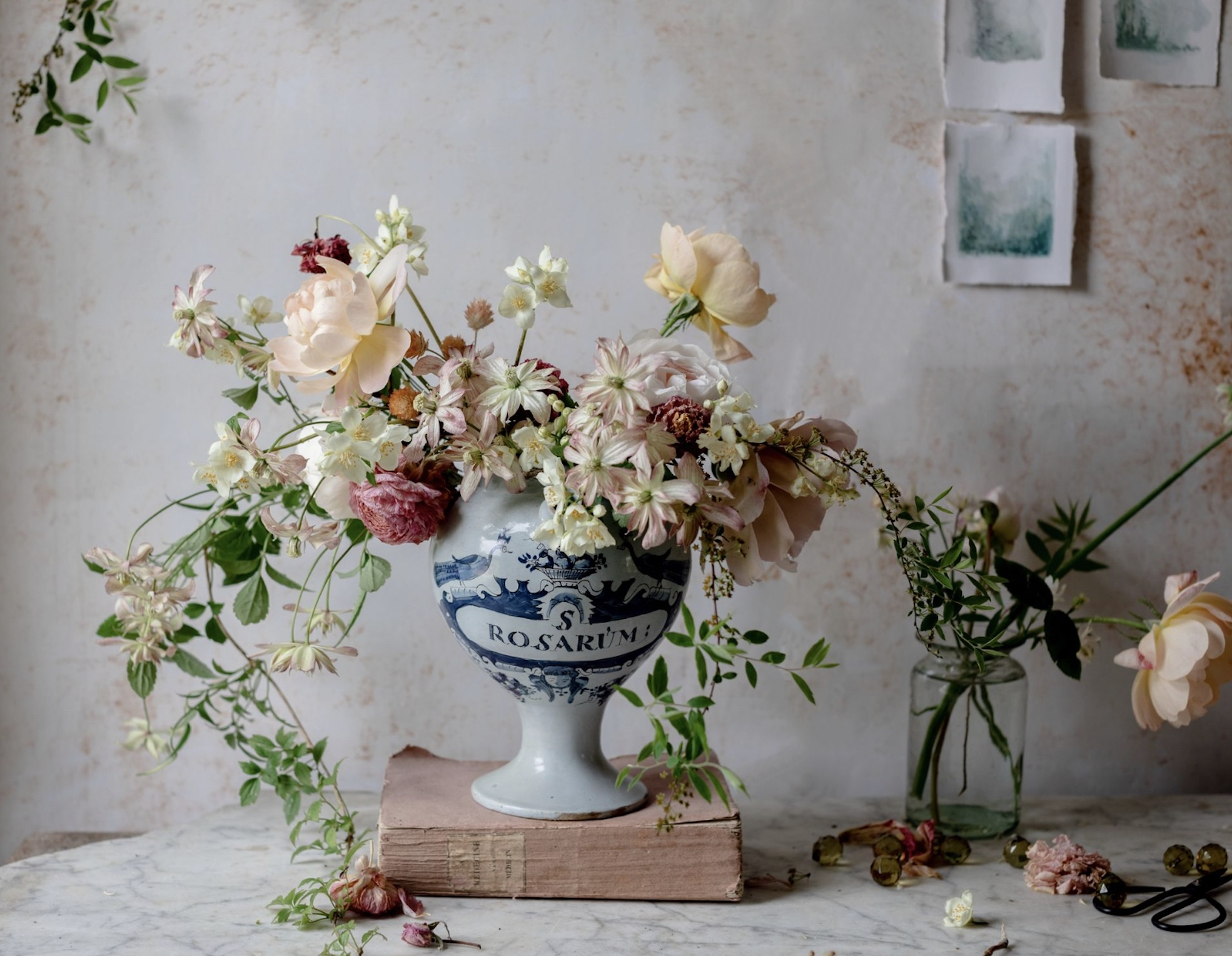Finding a Creative Life
I grew up on the outskirts of South-East London in a tree-lined avenue of horse chestnuts and closely packed semi-detached Edwardian houses. My parents weren’t gardeners, but we had a good-sized lawn. I would spend all the time I could up in a treehouse that Dad made with old planks. My sister, Sylvie, and I rigged up a pulley system with a bucket on a piece of rope between two trees, and I seem to remember spending a lot of time pulling it back and forth. I can’t for the life of me remember what we put in the bucket. I’d like to think it was something fabulous, like a bunch of wild grasses tied with a silk ribbon, but it was probably a couple of muddy stones. Eventually, Sylvie would get bored and return to the house to practise her ballet, but I loved the big skies up in the trees, above the busy and noisy city, even at the age of seven.
My Grandmother gardened in big floppy straw hats and wafty skirts. Her garden wasn’t particularly fashionable at the time of manicured lawns and serried rows of well behaved bedding plants but to me it was a romantic wonder. Overgrown rose bushes, tall Shasta daisies with curled petals in full conversation with the big blowsy scarlet Oriental Poppies that she favoured.
She had a spare room at the front of her house that was full to the roof with fabrics, magazines, vases and books. She taught me to make patchwork quilts, and press flowers within the pages of old magazines. Time with her, I remember now, was time just to be and explore. No pressure. No expectations.
At 18, I went to university to study fine art. I didn’t have a clear plan, but at the time, university was the unquestionable next step. My sense of worth was tied up in following the crowd and norm. We were encouraged to experiment with mark making, which I had done with such abandon as a child, but now I felt a strange bewilderment. My work should have worth and purpose, I thought And so, I wafted with a paintbrush, covering my dungarees in paint splatters in an effort to resemble a serious and anguished artist, while really struggling to find an accepted purpose in my work. I now know that I was missing the point, but it has taken me another 30 years to understand that.
I left university knowing that I needed to get a “proper job.” Enough of creative play. Time to be serious, have a career. My canvases were put in the family attic, and my paint brushes stored away. I got a job in a bank. I got to wear a suit. I was busy. I was a success. Finally, I had a direction that society understood. And I hated it.
It took me another eight years of staring out of that bank window before I finally realised that, possibly, there was more to my life than high heels and trouser suits—that maybe I could forge a creative career for myself outside as a garden designer.
Finally, I could immerse myself in the outside world. I took a few gardening jobs. I poured through books and learnt plant names. My husband helped me dig up the tiny lawn in our back garden so I could plant all kinds of flowers. I killed quite a lot of them, but others grew like weeds. I learnt as I went. And I loved it.
Tiny design jobs introduced me to new clients and my work became bigger and more complex. Bigger budgets.. Bigger success. Bigger headaches.
Slowly, though, I I realised that my creativity was dwindling. I was spending all my working hours studying spreadsheets, designing lighting plans, ordering paving, considering construction diagrams. By the end of the project, I was all but burnt out. I had become successful, I had won awards, but I had stopped being curious. Stopped looking at flowers in detail and wondering.
My sister offered me a lifeline. She and her long-term partner had finally decided to get married and asked me to design the flowers for the wedding. I threw myself into learning the principles of floristry. For a while, I struggled with disappointment of the commercial flowers widely on offer to florists. I couldn’t recreate the tiny, romantic garden that was in my head with stiff, imported, unscented roses. I didn’t want to use peonies in October. I wanted to embrace the seasons and use what grew in my garden naturally. I wanted to re- create those precious moments from my childhood stood in my Grandmothers garden and encapsulate the utter romance and spontaneity of those wild, unpruned roses and excited conversations that appear to take part between the flowers in the border. I wanted to gather and bring some of that inside, in homage to the wonderful landscape we are lucky enough to live in and because I will never tire of the scent of garden roses.
So I learnt the accepted principles and mechanics of floristry, how to wire a buttonhole properly, learnt through trial and error which flowers cut from the garden would last long enough in water to look glorious in an urn for more than 12 hours and which are really better left outside. I took workshops and learnt from other florists I admired and then set about creating my own take on floral design, weaving it with my landscape design work. The two now inform each other. Possibly in another life I would have been a theatre set designer, creating visual stories but I don’t like being inside much. I still like being up in the trees and occasional dragging a part of that tree inside and then capturing the image. So I guess I am creating visual stories after all.
Unedited extract taken from , ‘The Flower Hunter’. Oct 2021
My studio at home.



